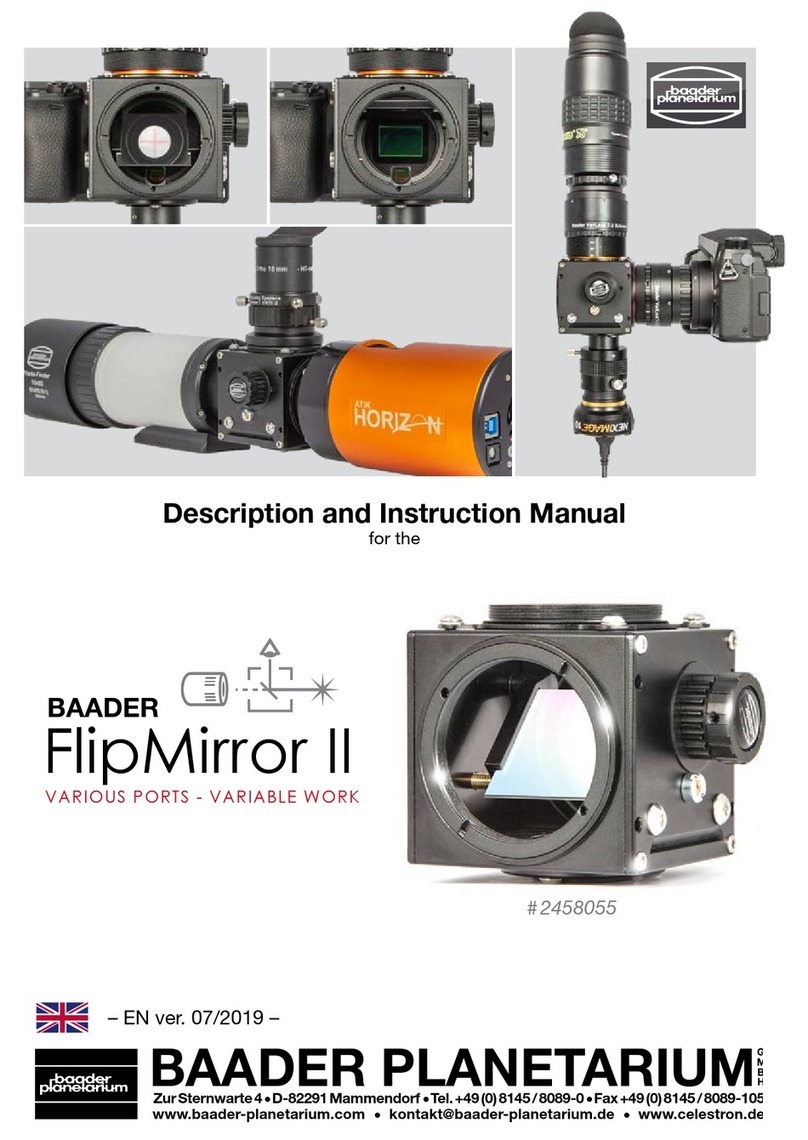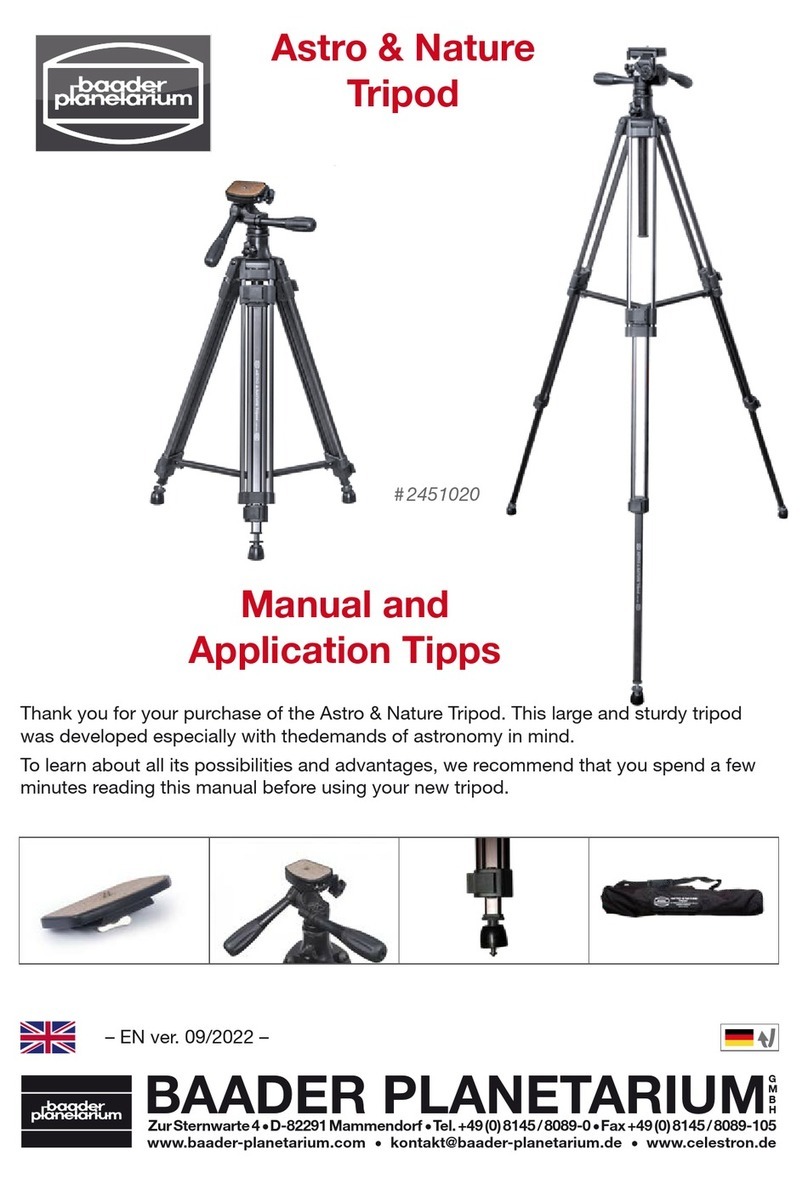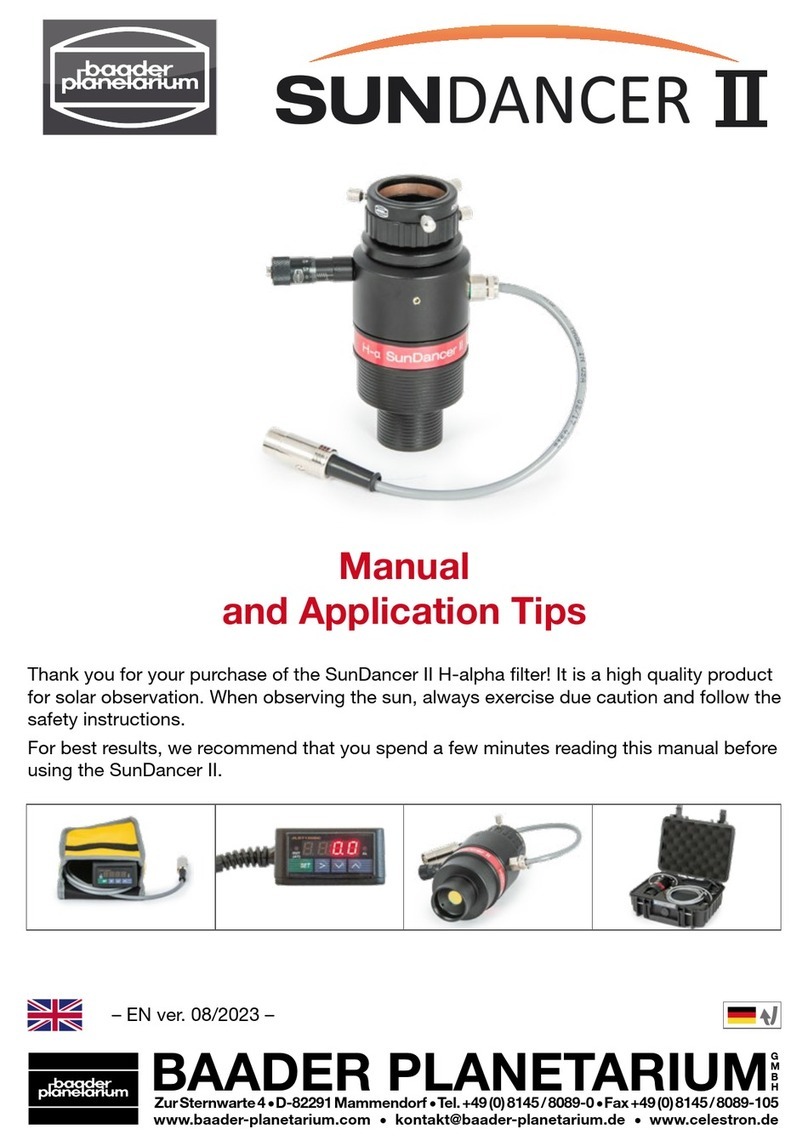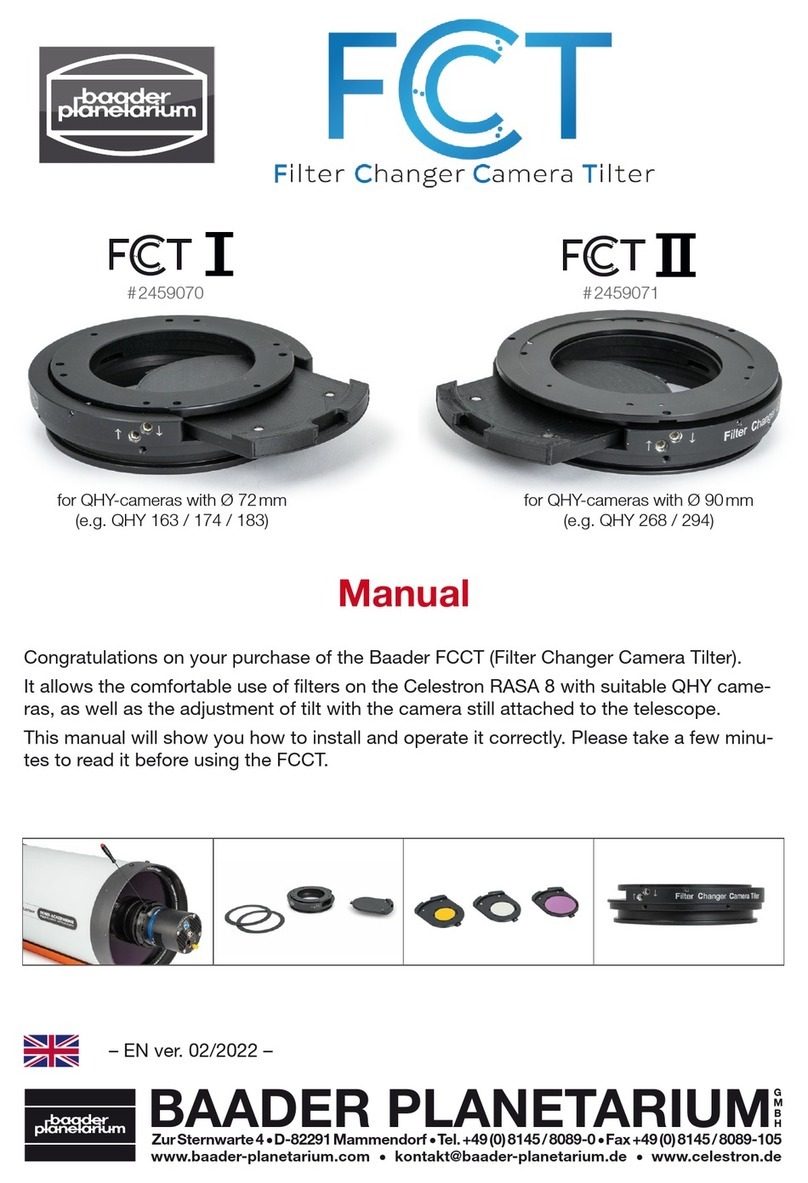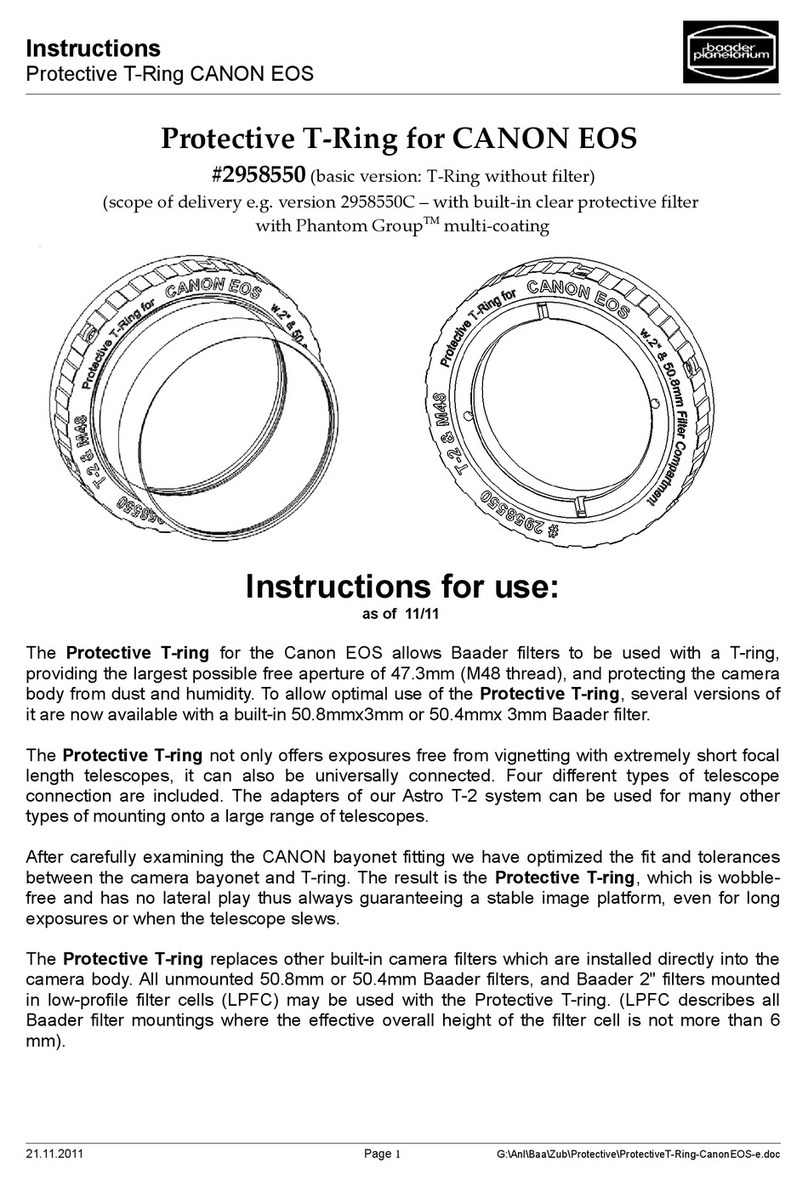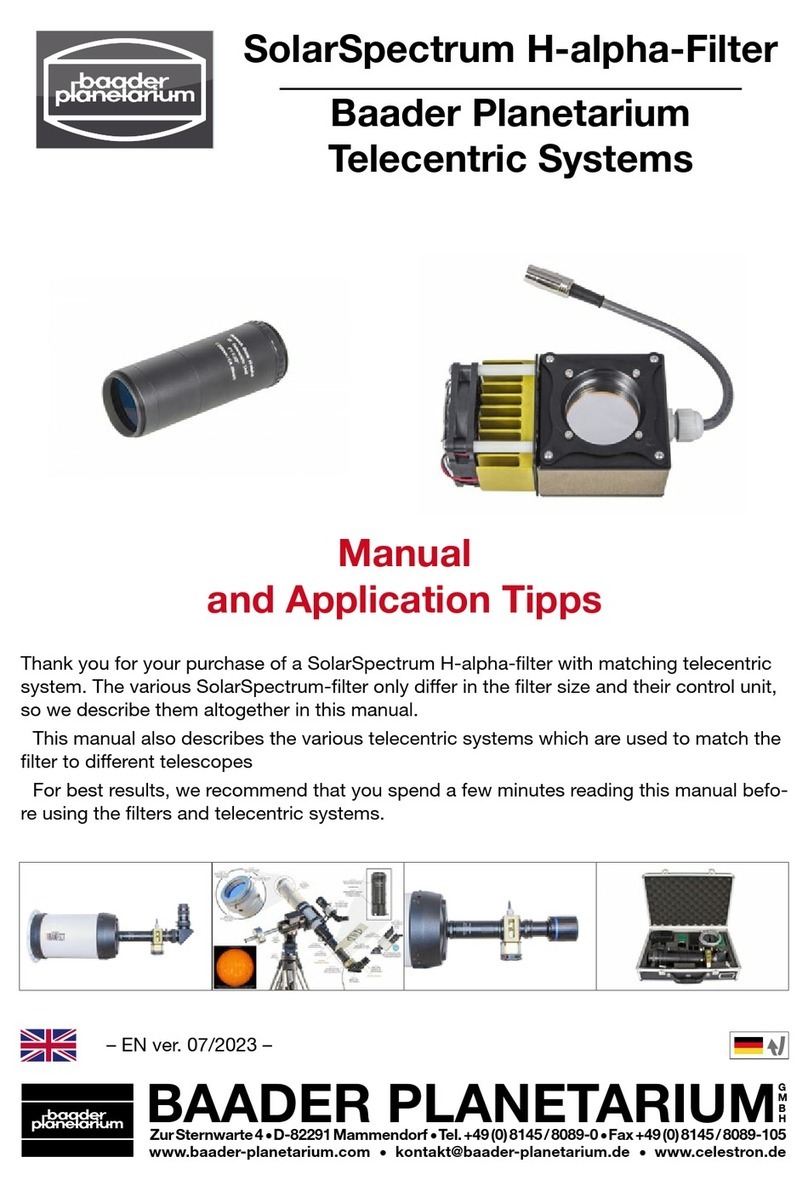
4Manual: Cool-Ceramic Safety Herschel Prism Mark II
For photography, please note:
• Make sure that the lters are strong enough for focal solar photography – start with
the pre-mounted lters for visual observation and gradually replace the 2" ND lter
(1:1000, ND=3.0) pre-mounted in the prism housing with weaker lters, starting
with the ND1.8 (see also page 9). Photographically, we recommend using the Solar
Continuum lter in any case to achieve a better contrast.
• Depending on the focal ratio of the telescope, the image may appear too bright in
the viewnder of a DSLR. In this case, hold a suitable lter (e.g. a neutral density
lter # 2458245 / ND=1.8, 1:64) between the eye and the camera viewnder, or use
the LiveView of the camera if possible.
Further important hints
1. Never screw in any lter in front of the Herschel prism. When observing the sun
with any Herschel prism, the unltered sunlight hits the prism with full energy. For
this reason, additional lters or polarisers must never be mounted between the
telescope objective and the Herschel prism – i.e. "in front of" the Herschel prism
– as the heat load would be so high that any lens or lter installed in front of the
Herschel prism would immediately shatter. In the exact unprotected focus of a 6"
refractor, f/6 to f/15, temperatures of up to 600 degrees Celsius prevail.
2. If the photographic version of the Herschel prism is to be used for visual observati-
on, make sure before each visual observation that the 1:1000 attenuating glass (ND
= 3.0 / # 2458332) has been reinserted telescope-side in the rotatable lter mount
and that the sunlight is sufciently attenuated for visual observation by another l-
ter (solar continuum, ND or polarising lter). Use the article number on the lter cell
(ND 3.0 = # 2458332) to check that the correct lter for visual observation is really
in the beam of light.
3. Under no circumstances should welding glasses, black-exposed lms or similar
aids be used as additional lters for visual observation, since in almost all cases
these allow the infrared heat radiation – which is harmful to the eye – to pass un-
noticed.
4. Refractors with Petzval systems or other telescopes that have glass in the light
path near the focal point are also not suitable for the use of a Herschel prism.
In general, any Herschel prism may only be used on suitable refractors and only
without further lters/optics between the objective and the Herschel prism. Multi-
lens systems pose no problem as long as the optics are at the front of the objecti-
ve. As long as the light has not been focused (i.e. the energy is not yet concentra-
ted close to the focal point), the heat input is not higher than the solar energy on a
white surface in summer. All refractor optics, whether oil or air-gap, which are sold
by the company Baader Planetarium, are suitable for a Herschel prism. The oils
used are all UV-resistant. (However, we can only speak here for the products of the
brands we know – if necessary, check the manual of your telescope to see if it is
suitable for solar projection).
5. Reecting telescopes without a special coating are not suitable for solar observati-
on with a Herschel prism. With them, optical and mechanical components (secon-
dary mirrors, mirror mounts, etc.) are used close to the focal point and can be dest-
royed by the high heat load. The only exception are the triband telescopes from
